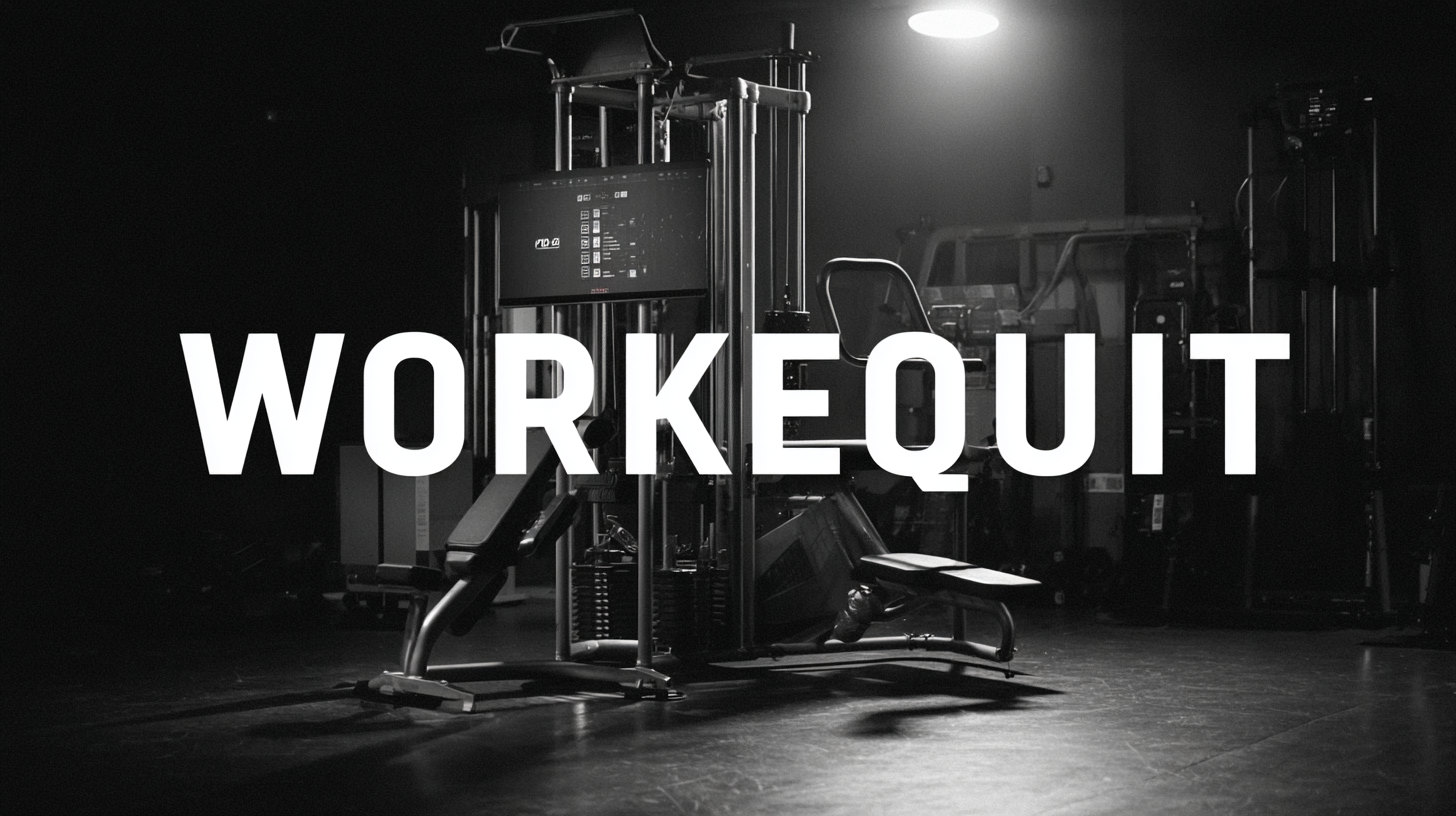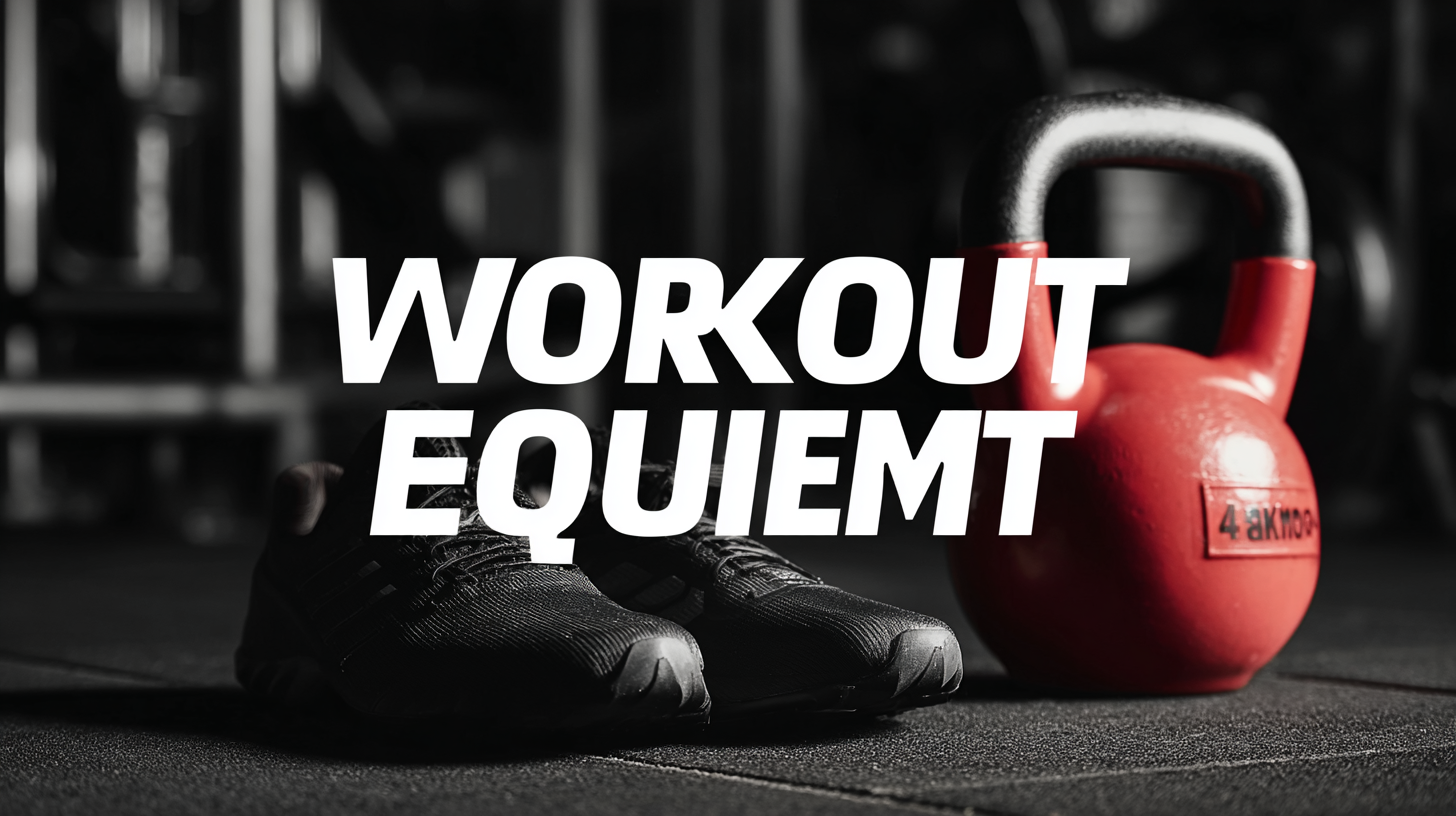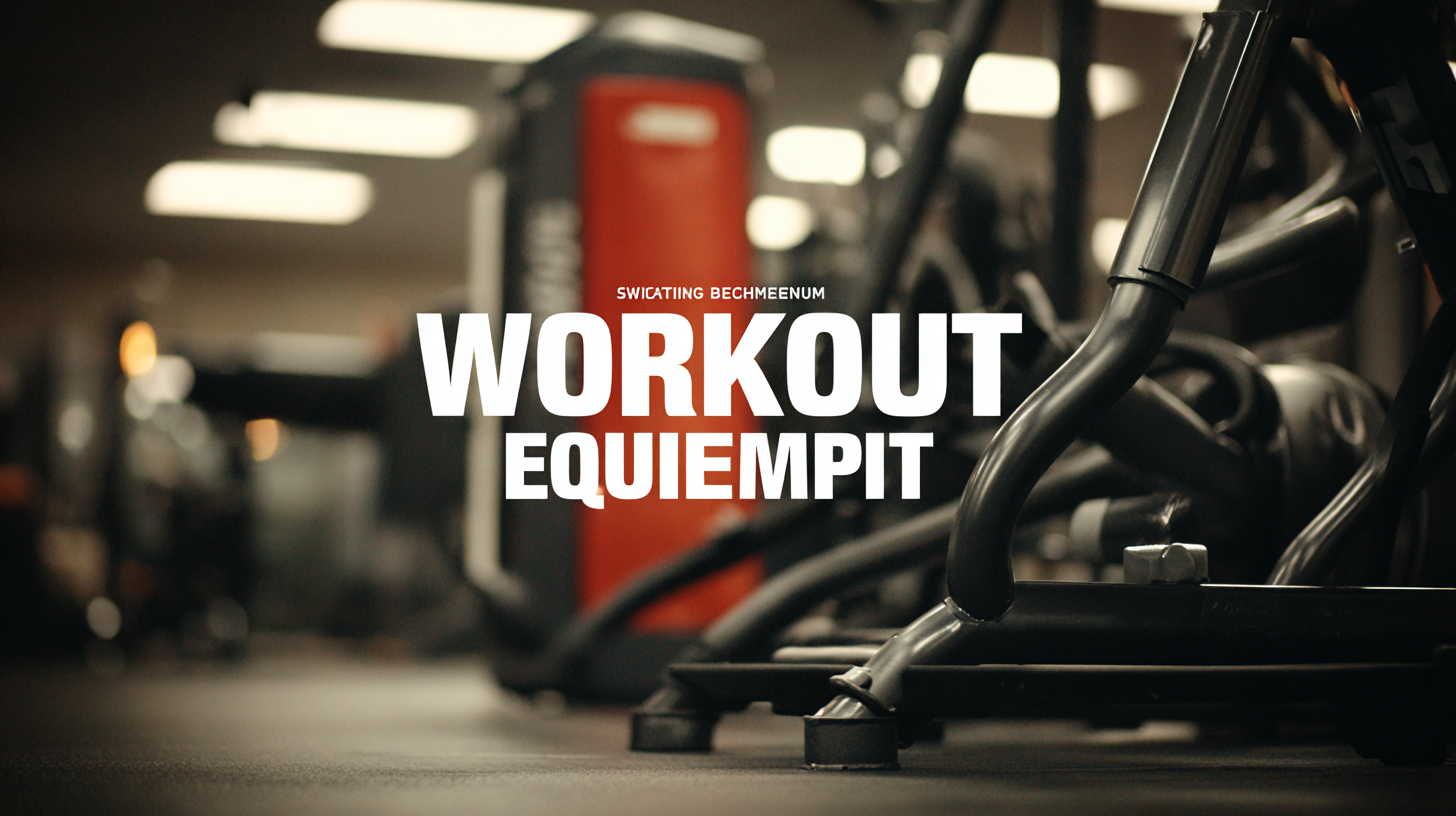Setting the Benchmark in Best Workout Equipment Through Industry Standards and Data Analysis
In the ever-evolving fitness industry, the importance of high-quality workout equipment cannot be overstated. Setting the benchmark in this competitive landscape requires not only adherence to stringent industry standards but also a keen understanding of data analysis to inform product development and safety measures. As fitness enthusiasts increasingly seek reliable and effective tools to enhance their training, manufacturers face the challenge of ensuring that their workout equipment meets both consumer expectations and regulatory requirements. This blog will explore how industry standards and data-driven insights are shaping the creation and certification of workout equipment, ultimately enhancing user experience and safety. Join us as we delve into the world of fitness equipment regulation and the critical role it plays in fostering innovation and consumer trust.

The Evolution of Workout Equipment Standards: A Historical Perspective
The evolution of workout equipment standards has been a significant journey that reflects changes in technology, safety, and the understanding of physical fitness. In the early days of fitness, equipment was often rudimentary, focusing primarily on functionality over safety. As more individuals engaged in physical training, the need for standardized equipment became evident. Organizations like ASTM International began to establish guidelines that would ensure consistency and safety across various workout tools, from free weights to cardiovascular machines.
As fitness culture evolved, so too did the standards governing workout equipment. The 1980s and 1990s marked a turning point with the rise of specialized gym equipment and increased attention to user ergonomics. Manufacturers started to invest in research and data analysis to create equipment that not only met safety standards but also enhanced performance and user experience. This period saw the introduction of variable resistance machines and the incorporation of advanced materials, making equipment more durable and versatile. Today's standards continue to build on this foundation, integrating smart technology and user feedback to redefine what constitutes effective and safe workout equipment.

Key Industry Standards Defining Quality and Safety in Fitness Equipment
When it comes to selecting quality fitness equipment, understanding key industry standards is essential for ensuring both safety and effectiveness. Organizations like the American National Standards Institute (ANSI) and the International Organization for Standardization (ISO) provide rigorous benchmarks that set the stage for quality assessment in exercise equipment. For instance, ANSI/ASTM F3096-14 outlines safety specifications for strength training equipment, significantly reducing injury risks when approved standards are followed.
One critical aspect that often goes overlooked is the testing and certification process. According to a 2022 study by the National Institute for Occupational Safety and Health (NIOSH), equipment that meets established safety guidelines has a 40% lower incidence rate of user injuries compared to non-standardized products. This data emphasizes the importance of selecting equipment that complies with these rigorous standards.
Tips: Always look for certifications marked on the equipment you are considering. Additionally, ask suppliers for performance reports that validate the quality and safety features of their products. By doing so, you not only enhance your workout experience but also ensure that you are investing in equipment that prioritizes user safety.
Utilizing Data Analysis to Identify the Best Workout Equipment Choices
 In the evolving landscape of fitness, choosing the best workout equipment can be overwhelming. However, by harnessing the power of data analysis, we can make informed decisions that enhance our workout experience. Analyzing user reviews, performance metrics, and industry standards enables us to identify key features that define superior fitness gear. By examining comprehensive datasets, we can pinpoint equipment that not only meets individual fitness goals but also aligns with broader industry benchmarks.
In the evolving landscape of fitness, choosing the best workout equipment can be overwhelming. However, by harnessing the power of data analysis, we can make informed decisions that enhance our workout experience. Analyzing user reviews, performance metrics, and industry standards enables us to identify key features that define superior fitness gear. By examining comprehensive datasets, we can pinpoint equipment that not only meets individual fitness goals but also aligns with broader industry benchmarks.
For instance, data analysis can reveal trends in durability, user satisfaction, and versatility among various products. By aggregating feedback from fitness enthusiasts and professionals, we can develop a clearer picture of what constitutes effective workout equipment. This approach not only helps consumers select the right tools for their routines but also drives manufacturers to innovate, ensuring they meet the demands of an increasingly discerning market. Ultimately, leveraging data as a guide allows fitness lovers to invest in quality equipment that truly supports their health and wellness journeys.
Comparative Insights: Analyzing Top Brands Against Industry Benchmarks
The landscape of workout equipment is increasingly shaped by rigorous industry standards and data-driven analysis. As brands strive to differentiate themselves, benchmarking against industry leaders is essential. Recent insights reveal that more than 60% of fitness enthusiasts prioritize equipment durability and performance, a trend highlighted by the surge in sales for brands meeting these benchmarks. Data analysis not only helps in assessing product quality but also guides manufacturers in optimizing designs to meet consumer expectations.
In the context of social media marketing for fitness brands, leveraging analytics has become indispensable. With over 70% of consumers stating that social media influences their purchase decisions, brands must effectively showcase their products online. Insights from competitive analysis indicate that leading brands strategically use social platforms to engage with their audience, demonstrating how data informs campaigns that resonate with consumer interests. By understanding demographics and engagement rates, brands can tailor their messaging and strengthen their market presence, ultimately setting a high standard for peers in the fitness equipment industry.
Future Trends in Workout Equipment Standards: What to Expect in the Industry
As the fitness industry evolves, so do the standards surrounding workout equipment. Future trends indicate a move towards more advanced technologies that enhance user experience and safety. For instance, expect an increase in smart equipment that not only tracks performance metrics but also provides real-time feedback. This shift towards data-driven fitness solutions will empower users to achieve their goals more effectively.
Tips for selecting your workout equipment: prioritize brands that prioritize safety and adhere to industry standards. Always check for certification labels and read user reviews to understand the performance of the equipment. Additionally, consider equipment that offers versatility, enabling you to engage in various workouts without the need for multiple machines.
Moreover, sustainability is becoming a critical consideration. Look for manufacturers who utilize eco-friendly materials and practices in their production. By choosing sustainable options, you can contribute to a healthier planet while benefiting from durable and high-quality equipment that meets modern standards. As these trends shape the future of workout equipment, staying informed will allow you to make smarter choices for your fitness journey.
